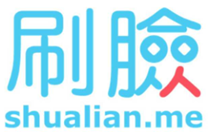Chinese Startups Facial Recognition Lending:

What is Shualian?
Shualian (刷脸) is a big-data facial-recognition lending service. The P2P Shualian application allows friends to lend and borrow money (RMB) among their close circles, reducing the dependency on banks and the overall bureaucratic hassle involved with transferring monies. In order to ensure utmost security during the lending or borrowing process, users of Shualian are given a credit score that gradually adjusts based on their performance on the platform. The credit score is initially comprised from a highly intricate algorithm that parses through various criteria in order to give the most accurate reflection of the person’s reliability. Among these criteria is Shualian’s innovative facial recognition software, which among other functions is able to identify the user’s social media platforms to create and build a comprehensive understanding of the user’s persona.
To what degree can users borrow/lend with others?
The Shualian platform allows users to borrow and lend from relationships that are up to two-degrees away. This means direct friends, as well as friends-of-friends. Strangers are not encouraged to borrow and lend from each other on the platform, as there is no real-life connection with which to communicate between the parties and establish a basic level of trust.
What criteria are looked at to draw a credit score?
Every Shualian user undergoes an ongoing multi-dimensional evaluation in order to develop their credit score. Several criteria are looked at, in addition to models and algorithms that are employed, to learn more about each user and their potential reliability. The credit score is meant to be a representation of how much you can afford to lend in RMB as a lender, and how likely you are to pay back a loan as a borrower. The score is comprised of the following factors, each of which bears a weight of its own:
Performance on Platform: The main composition of a user’s credit score is their ongoing performance as both a lender and borrower on the platform. A user’s credit score will evolve and change based on their fulfillment in paying back their loan, the amount and scale of loans they grant, as well as their consistency regarding meeting payback deadlines. The better the performance, the higher the score and vice versa.
 Endorsements from Friends: As Shualian is a friend-based platform, much emphasis is placed on the real-world value of these interpersonal relationships and the trust acquired from outside the virtual platform. As such, endorsements among friends are considered a viable and honest indicator of credibility on the platform. The logic is that if a user were to falsely endorse an unreliable friend, they could indirectly later be the ones to suffer the consequences.
Endorsements from Friends: As Shualian is a friend-based platform, much emphasis is placed on the real-world value of these interpersonal relationships and the trust acquired from outside the virtual platform. As such, endorsements among friends are considered a viable and honest indicator of credibility on the platform. The logic is that if a user were to falsely endorse an unreliable friend, they could indirectly later be the ones to suffer the consequences.
 Personal Survey & Presentation of Proof: Every new user to Shualian fills out their personal profile and submits a survey. In addition to the typical profile information, the user can choose to input additional data such as their salary, work experience, etc… all of which must be backed by some sort of evidence or proof of authenticity. This is encouraged is order to increase each user’s transparency, which in turn helps verify their credibility. As such, the more the user provides information about their background, the higher their credit score becomes.
Personal Survey & Presentation of Proof: Every new user to Shualian fills out their personal profile and submits a survey. In addition to the typical profile information, the user can choose to input additional data such as their salary, work experience, etc… all of which must be backed by some sort of evidence or proof of authenticity. This is encouraged is order to increase each user’s transparency, which in turn helps verify their credibility. As such, the more the user provides information about their background, the higher their credit score becomes.
 Social Media & Payment Platform Algorithms: At the consent of users, Shualian’s algorithms are able to review users’ other social media platforms, as well as collect data from their payment platforms such as Jingdong & Taobao, to altogether create a kind of virtual picture of the person’s online persona and payment ability. As part of the personal survey, users are able to connect their Jingdong & Taobao IDs to allow Shualian to access their communication records. Shualian thereby receives more verifiable data about the user which enables it to create a more accurate credit score. Similarly, Shualian works with companies like FICO, a leading credit-scoring analytics company, to develop these algorithms so that they are as accurate as possible.
Social Media & Payment Platform Algorithms: At the consent of users, Shualian’s algorithms are able to review users’ other social media platforms, as well as collect data from their payment platforms such as Jingdong & Taobao, to altogether create a kind of virtual picture of the person’s online persona and payment ability. As part of the personal survey, users are able to connect their Jingdong & Taobao IDs to allow Shualian to access their communication records. Shualian thereby receives more verifiable data about the user which enables it to create a more accurate credit score. Similarly, Shualian works with companies like FICO, a leading credit-scoring analytics company, to develop these algorithms so that they are as accurate as possible.
 Facial Recognition Algorithms: One of Shualian’s signature features is its revolutionary facial recognition software. This feature is in constant development as its algorithms are continually learning and updating with accumulative experience. The facial recognition software is used as the first indicator to generate an initial credit score estimate based on the user’s facial features. By either uploading a pre-existing picture, or taking a picture live in the application, the facial recognition software aims to establish and confirm basic facts such as the user’s identity, age, ethnicity, representability, and even occupation. Similar to the real-world concept of first-impressions, the initial facial recognition credit score bears little weight in the long-run, and is only used as an initial basis of evaluation. From this preliminary score, the user’s actions will change the score accordingly. The connection between Shualian’s facial recognition and social media is also foolproof against impersonations. By matching the image with a person’s other social media, it requires both the user and their friends to verify and confirm a new user’s identity (via email, WeChat etc…) before any interaction is allowed. Thus, users can rest assured that the person they are borrowing from and/or lending to are who they say they are.
Facial Recognition Algorithms: One of Shualian’s signature features is its revolutionary facial recognition software. This feature is in constant development as its algorithms are continually learning and updating with accumulative experience. The facial recognition software is used as the first indicator to generate an initial credit score estimate based on the user’s facial features. By either uploading a pre-existing picture, or taking a picture live in the application, the facial recognition software aims to establish and confirm basic facts such as the user’s identity, age, ethnicity, representability, and even occupation. Similar to the real-world concept of first-impressions, the initial facial recognition credit score bears little weight in the long-run, and is only used as an initial basis of evaluation. From this preliminary score, the user’s actions will change the score accordingly. The connection between Shualian’s facial recognition and social media is also foolproof against impersonations. By matching the image with a person’s other social media, it requires both the user and their friends to verify and confirm a new user’s identity (via email, WeChat etc…) before any interaction is allowed. Thus, users can rest assured that the person they are borrowing from and/or lending to are who they say they are.
Shualian Human Evaluation: While most of the above processes are automated, Shualian also employs human evaluation to intervene with outlier cases such as credit disputes, monetary disagreements, and inconsistencies.
.
To what extent is the Facial Recognition Service moral & accurate?
Shualian’s facial recognition is only used for initial evaluation when there is not yet any information about the user, later on it is not as significant.
How Moral? While the concept of openly drawing conclusions based on first impressions may seem foreign and immoral to Western cultures, in China it is perceived as a natural human tendency to glean information and is not viewed with severity. Visual appearance is a means by which people are able to establish an initial evaluation of the people they meet. While in the West this process may be subconscious, in China it is done consciously and is a socially acceptable and publicly employed means of assessing a new person. For example, measures such as age can to some degree be an indicator of financial stability, while representability can arguably be considered reflective of reliability. Intended to aid interaction between 2nd degree connections on Shualian, the facial recognition feature is a method for two users who may not directly know each other to acquire initial information about one another. Still, it is important to emphasize that the facial recognition is by no means a confirming factor of any kind, and therefore the algorithms are always learning and improving.
How Accurate? The facial recognition software is part of a larger ongoing research being conducted at Peking University’s Guanghua School of Management, which is analyzing and measuring the relationship between a person’s face and their reliability. This revolutionary research is attempting to establish an understanding regarding whether a person’s appearance can to some degree reflect how trustworthy they are. As such, the initial credit score generated by Shualian’s facial recognition is an educated estimation based on the research’s ever-evolving programmed algorithms and is not claiming to be 100% scientifically accurate.
What is the credit score range and what does it indicate?
The top credit score on Shualian is 900, and is a merged assessment of the user as both a borrower and lender. The credit score is only intended to serve as an aid for users, and is not committing in any way. Users are free to assess their own risk variability/preference to determine who they want to lend to/borrow from.
How much money is typically loaned or borrowed on the platform?
The average sum that is either borrowed or lent on Shualian is 15,000 RMB. The maximum amount that can be transferred on the platform is 1 million RMB due to limitations from third-party payment platforms. Furthermore, in one session any sum up to 200K RMB can be exchanged. The average interest rate determined by the loaners stands at roughly 8%.
What are the terms for borrowing & lending?
- Shualian is open to any user who holds a Chinese bank card.
- A new user must first receive verification to authenticate their identity and give them access to their friend circles.
-
The terms for borrowing and lending are pre-set by the loaner. The loaner can determine:
- For how long they wish to lend their money
- How much interest rate they charge until they get their money back.
- The borrower must agree to these conditions before the transaction takes place. The platform will automatically keep track of the loan and accumulating interest, and is programmed to send reminders to the borrower and alert them when the payment deadline approaches.
- Should a user fail to pay back their loan in time, the case goes on to a 3rd party for evaluation and will likely affect the loaner’s credit score.
What is the Chinese cultural approach towards lending and borrowing money?
The Chinese Cultural Approach towards lending and borrowing can be differentiated between Northern and Southern China. In Southern China’s developed areas lending money and asking for it back is common and frequently employed amongst family, friends and even farther circles. Meanwhile, in Northern China, especially in regions with less developed economies, lending money is associated with more emotional relations and are far less business-oriented in nature. A Southerner would be more likely to lend to a distant connection for personal interest, while a Northerner would often refrain from such and would choose to help close friends in their inner circles only in times of need (personal duty). As such, the Shualian platform is more accommodating to the Southern mentality, where there is less susceptibility to the fragility of emotional relationships. The platform allows close circles to engage in business transactions with clearly defined terms and pre-determined interest rates to better manage their risk and credit management.
The Chinese culture is very much oriented around trust and saving face (reputation). The Shualian credit score acts as a kind of virtual representation of these two values and as such is of high significance to users. Shualian users, who are predominantly Chinese, will therefore strive to maintain the highest credit score possible in order to prove they are trustworthy and reliable to their inner circle of friends and family.
How many users does Shualian have and who is their main audience?
Shualian has already accumulated upwards of 230,000 users on its platform since its inauguration in July 2015. The majority of its users come from Guangdong, Guanxi, Sichuan and Fujian. It is currently mostly targeted towards the Southern Chinese audience where there is a bigger market for this service. The company hopes to gradually infiltrate more into Northern China and hopefully lead a regional change in mentality. The average Shualian user age-range is between 18-35 years old.
Who are Shualian’s competitors?
The Shualian platform is an innovative and new concept in China. It is loosely based on the US social finance firm SoFi, which enables loans amongst MA alumni. Furthermore, following Shualian’s public initiation in 2015, Jiedaibao (借贷宝), emerged as a new competitor in the Chinese market. However, both SoFi and Jiedaibao, while similar in concept, do not include Shualian’s innovative credit authenticity features such as the facial recognition software and vast database of linked social media platforms.
What is Shualian’s marketing strategy?
 The Shualian company originally started as a project that was designed for the founders’ inner friend-circles. Through word-of-mouth it began to gain popularity and grow organically. Shortly after its founding, the company won a startup competition that furthermore propelled it forward. There is additionally a referral system that provides users with bonuses when their friends join the platform.
The Shualian company originally started as a project that was designed for the founders’ inner friend-circles. Through word-of-mouth it began to gain popularity and grow organically. Shortly after its founding, the company won a startup competition that furthermore propelled it forward. There is additionally a referral system that provides users with bonuses when their friends join the platform.
Has Shualian thus far received any funding?
Shualian company was founded in April 2015 and by July of the same year received its initial seed funding from Tsinghua University. In October 2015, it received angel funding from HeiDong (黑洞) and TusStar Business Incubator.
What is Shualian’s business model?
The Shualian platform is currently free of charge. As it is essentially a money transferring service, a small commission fee is charged from both borrowers and lenders during transactions.
What was the vision for Shualian?
 Since its inauguration in 2015, Shualian has experienced fast growth and numerous successes. The inspiration for this kind of “friend ATM” arose from two essential needs- to make the bureaucratic process of transferring monies simpler and easier, and to enable friends to engage in these acts with their trusted inner circles rather than involve a foreign body. While the idea of a facial recognition system originally seemed like a far-fetched and unreliable concept, it has since proven itself to be a working and revolutionary technological advancement that will only continue to grow in significance in the future.
Since its inauguration in 2015, Shualian has experienced fast growth and numerous successes. The inspiration for this kind of “friend ATM” arose from two essential needs- to make the bureaucratic process of transferring monies simpler and easier, and to enable friends to engage in these acts with their trusted inner circles rather than involve a foreign body. While the idea of a facial recognition system originally seemed like a far-fetched and unreliable concept, it has since proven itself to be a working and revolutionary technological advancement that will only continue to grow in significance in the future.
Meet the team!
The Shualian team is currently composed of 27 people.
 MaShun 马顺 (Edward): Edward hails from Guizhou province and is the CEO of Shualian. He is a former student at Peking University’s prestigious Guanghua Business School, graduating in 2000. Edward previously headed another similar startup called Find Silver (找银子), a P2P company that allowed for public collateral of property to be collected for a loan. The platform had a total accumulative transaction sum of 1.7 billion yuan. In addition to his entrepreneurial endeavors, he also has numerous years of experience in the finance sector, working for Union Pay and serving as the VP of Marketing and Online Operation for First American Financial Corporation in China.
MaShun 马顺 (Edward): Edward hails from Guizhou province and is the CEO of Shualian. He is a former student at Peking University’s prestigious Guanghua Business School, graduating in 2000. Edward previously headed another similar startup called Find Silver (找银子), a P2P company that allowed for public collateral of property to be collected for a loan. The platform had a total accumulative transaction sum of 1.7 billion yuan. In addition to his entrepreneurial endeavors, he also has numerous years of experience in the finance sector, working for Union Pay and serving as the VP of Marketing and Online Operation for First American Financial Corporation in China.
 Zhou Zhen 周震: Zhen is the Chief Operating Officer (COO) of Shualian. He recieved his MBA from Peking University’s Guanghua Business School. A serial entrepreneur, Zhen has 15 years of finance experience in the payment industry.
Zhou Zhen 周震: Zhen is the Chief Operating Officer (COO) of Shualian. He recieved his MBA from Peking University’s Guanghua Business School. A serial entrepreneur, Zhen has 15 years of finance experience in the payment industry.
.
 Li Senlin 李森林: Senlin is the Chief Technology Officer (CTO) of Shualian. He has a Bachelor of Engineering and is a serial entrepreneur. Altogether Senlin has over 10 years of experience in the field of technological management.
Li Senlin 李森林: Senlin is the Chief Technology Officer (CTO) of Shualian. He has a Bachelor of Engineering and is a serial entrepreneur. Altogether Senlin has over 10 years of experience in the field of technological management.
.
 Li Meng 李萌: Meng is Shualian’s Chief Marketing Officer (CMO). He is an alumni of Peking University’s Guanghua School, and has over 10 years of experience in marketing and multinational operations.
Li Meng 李萌: Meng is Shualian’s Chief Marketing Officer (CMO). He is an alumni of Peking University’s Guanghua School, and has over 10 years of experience in marketing and multinational operations.
Shualian Screenshots:
For more information:
Website: http://aishualian.com/
Wechat ID: aishualian







